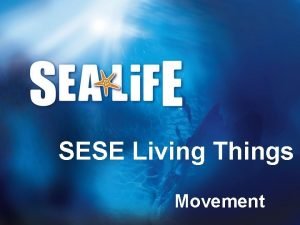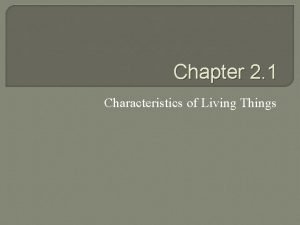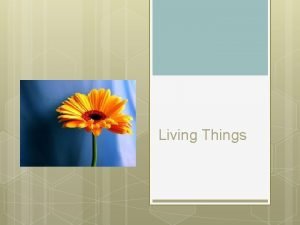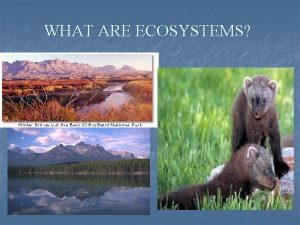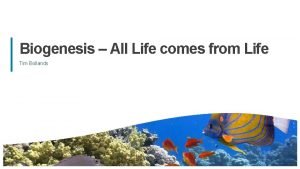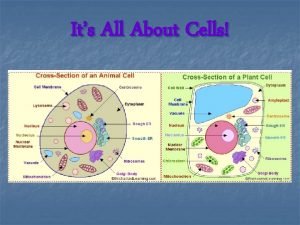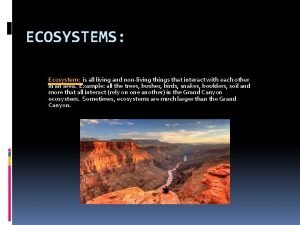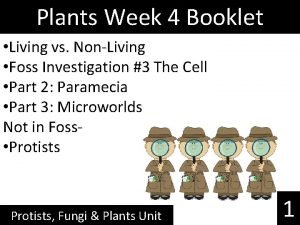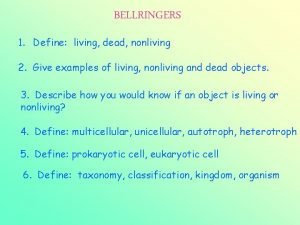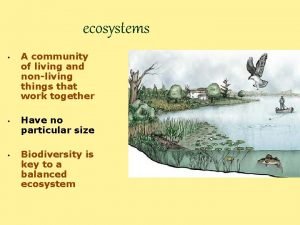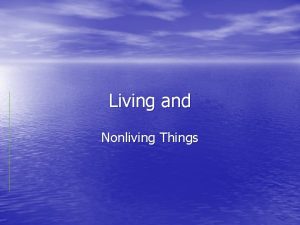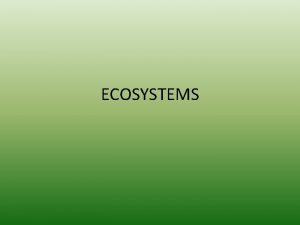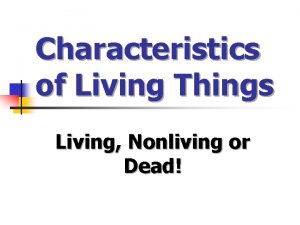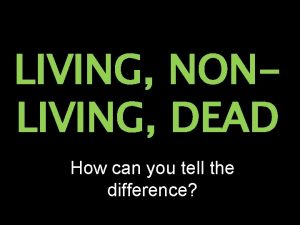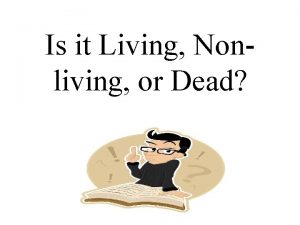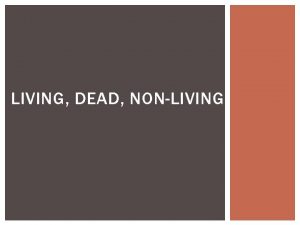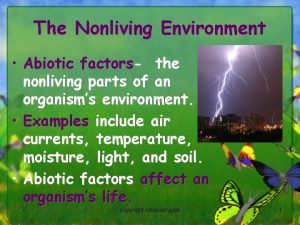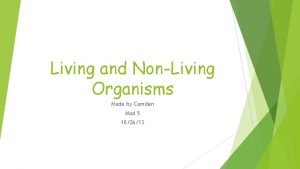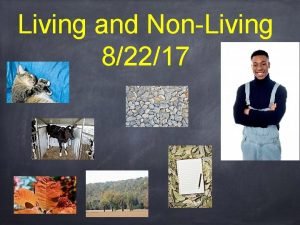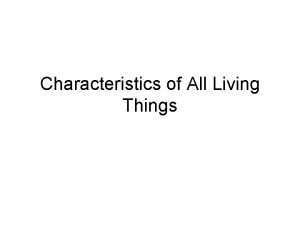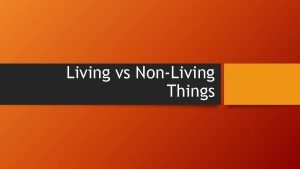Living Nonliving Dead Matter Matter is made up















- Slides: 15

Living, Non-living & Dead

Matter • Matter is made up of atoms. • Atoms have mass and volume (take up space). SO… • Matter is anything that has mass & volume.

Atoms • They are the smallest particles that make up matter. • They have a dense central nucleus made of protons & neutrons and electrons orbiting around the outside. • Atoms are tightly packed in solids, looser in liquids and widely spaced in gases.

Living • Made up of cells that are doing life functions. Bacteria Protist Fungus Blood Animal (Human) Nerve Bone Plant Muscle

Cells • The basic unit of living things. • They do life functions.

Life Functions • Take in nutrients for energy. • Maintain homeostasis (dynamic equilibrium) • Growth • Development • Reproduction • Evolution

Take in nutrients for energy • Organisms must find and take in food items. • Cells take in nutrients so they can do cell respiration to release the stored chemical energy.

Maintain Homeostasis • Maintain balanced internal chemistry. • Organisms respond to outside stimuli. • All organ systems participate in keeping equilibrium. • Endocrine system helps chemical balance.

Growth • Increase in size. • Due to addition of cells by cell division.

Development • Sequence of life stages. • Frogs , insects, plants and even humans go through developmental steps.

Reproduction • Making new organisms. • Asexually with one parent making clones of itself. • Sexually with 2 parent using sperm &eggs.

Evolution • Change in a species over time. • Evolution driven by survival of the fittest. • Adapting to changes in the environment.

Non-Living • Made of ATOMS. • The atoms ARE NOT arranged into cells.

What do you call something that is made of cells that no longer can do life functions? Dead!

Matter Fungus (Mushroom) Earth Living √ Non-living Dead (On it & in it. ) √ √ (On it & in it. ) Mineral (Quartz) Saliva Bacterium (L. acidophilus) √ √ Computer Ocean (On it & in it. ) √ Squished Cockroach √ Milk Firewood Feces √ √ √ (On it & in it. ) √ √√√ Grilled Tuna Sandwich Wind (Air) Protist (Paramecium) (On it & in it. ) √ √ (On it & in it. )
 Living non living dead
Living non living dead Living vs nonliving characteristics
Living vs nonliving characteristics Ecosystem living and nonliving things
Ecosystem living and nonliving things Is a starfish living or nonliving
Is a starfish living or nonliving Egg living or nonliving
Egg living or nonliving Is candle a living thing
Is candle a living thing Venn diagram of living and non living things
Venn diagram of living and non living things Freshwater non living things
Freshwater non living things Egg living or nonliving
Egg living or nonliving Are chromosomes living or nonliving
Are chromosomes living or nonliving Is tomato living or nonliving
Is tomato living or nonliving Tropical rainforest living and nonliving things
Tropical rainforest living and nonliving things Tree is living or nonliving
Tree is living or nonliving Protist coloring sheet answer key
Protist coloring sheet answer key Is sulfolobus living or nonliving
Is sulfolobus living or nonliving Ecosystem living and nonliving things
Ecosystem living and nonliving things



